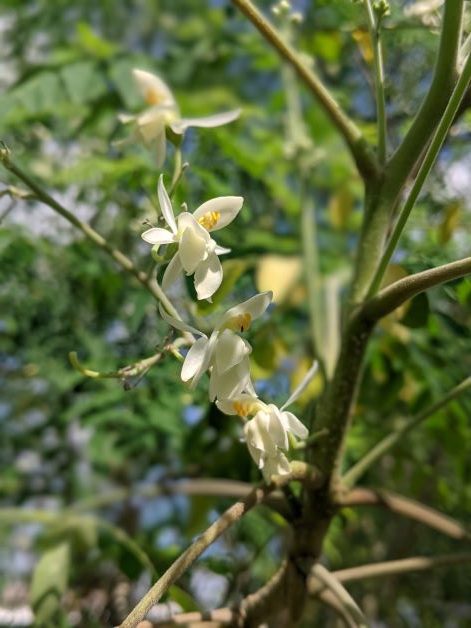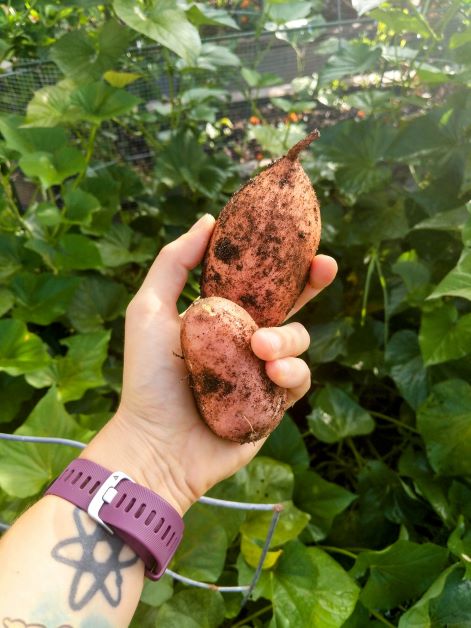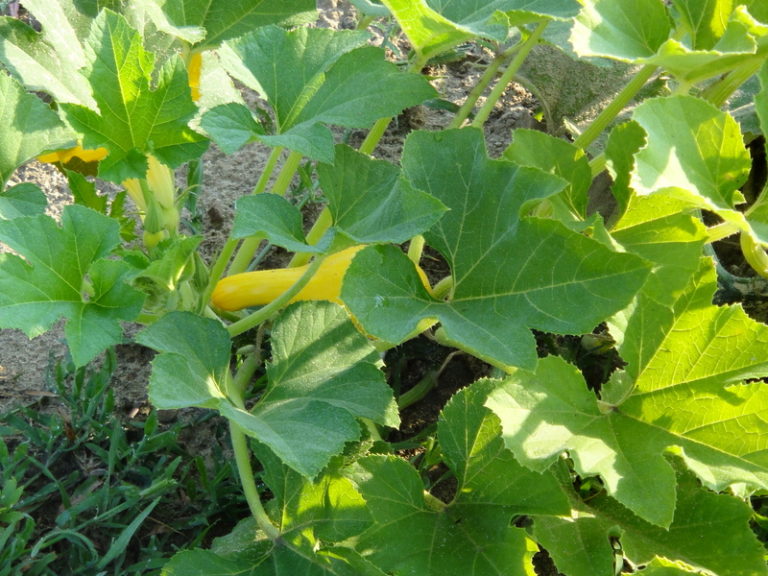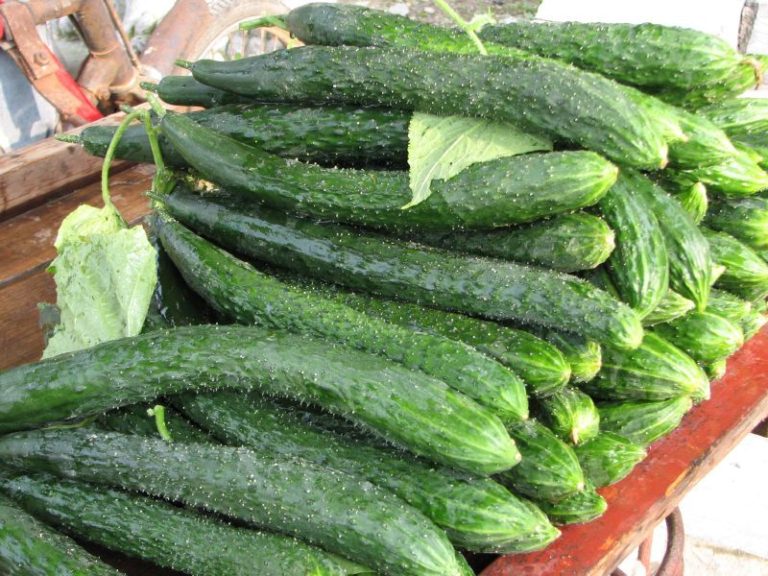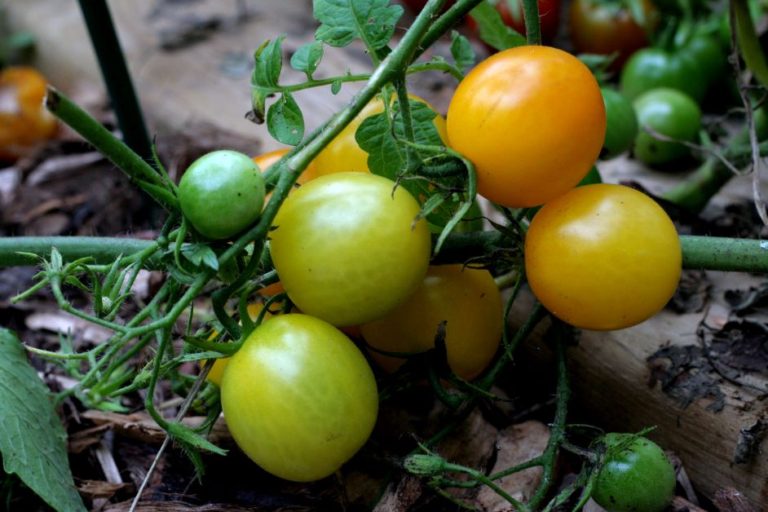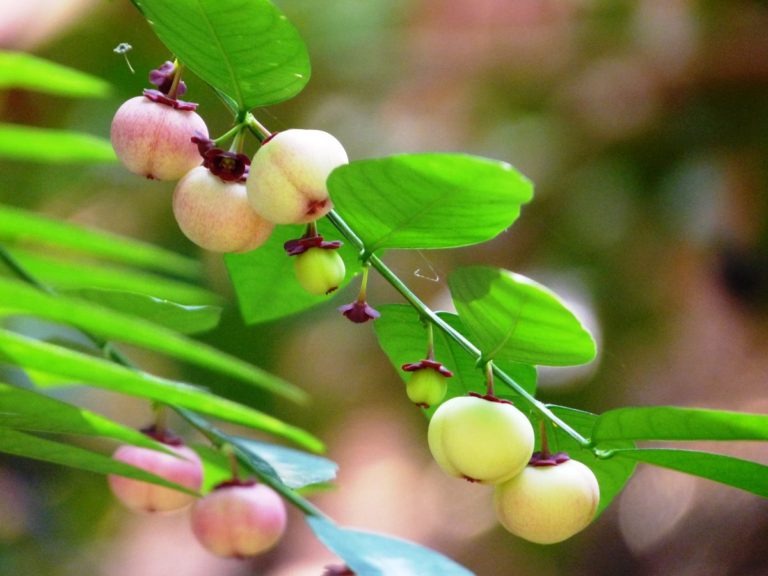How to Grow Moringa
Moringa oleifera is a tree native to Africa and Asia. This fast-growing tree can grow up to 18 inches a year, reaching a height of up to 30 feet. It only takes eight months to flower.
After pollination, the moringa flower forms a big pod called a drumstick. Picked fresh and green, the drumsticks are edible. If you let the drumstick dry out on the tree, you can harvest the seeds inside to plant new moringa.
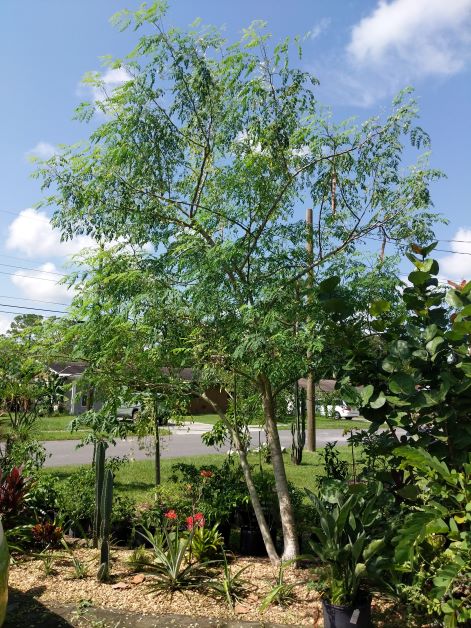
Moringa Nutrition
Hands down, moringa is one of the most nutritionally dense and healthy foods in existence.
Also known as the Miracle Tree, the leaves, flowers, pods, and roots are all edible. Some humanitarian organizations have brought the moringa to famine-stricken countries to fight malnutrition.
Moringa has:
- 25x more iron than spinach
- 10x more vitamin A than carrots
- 7x more vitamin C than oranges
- 9x more protein than yogurt
- 4x more fiber than oats
- 17x more calcium than milk
- 15x more potassium than bananas
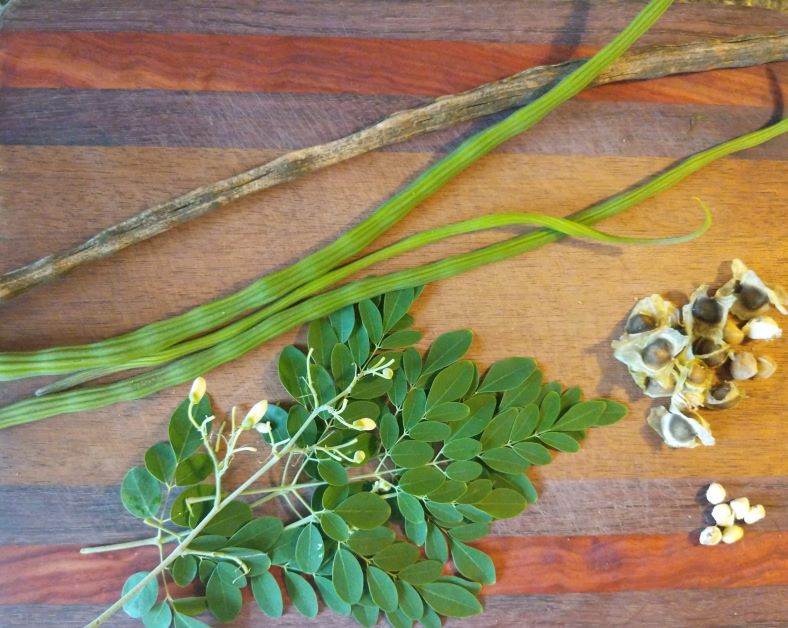
Moringa Care
Moringa is a low-maintenance plant that’ll grow pretty much anywhere as long as it’s hot.
Sun
Moringa is a full sun plant and needs at least 8 hours of light a day.
Temperature
As an African native, moringa is known for its tolerance for extreme heat. It does best in 75F-95F, but it can withstand 100F+ as long as it’s in a little bit of shade.
Moringa isn’t cold-tolerant. It drops leaves if the temperature drops below 70F and goes dormant at 50F. An established tree can handle a few light frosts but if the roots freeze, the tree will die. Because of this, moringa will only grow outdoors year-round in zones 9 through 11. Those living in colder climates will need to grow their moringa in containers so they can bring them indoors during the fall and winter.
Water
How much water your moringa needs depends on its age. Established moringa is drought-tolerant while younger plants benefit from more frequent watering.
Moringa is susceptible to root-rot, so less is more when it comes to watering.
Soil
Moringa has no trouble growing in poor, sandy soil. The most important thing is to make sure that your soil is well-draining. For best results, plant your moringa in soil with a pH of 6.3 to 7. If your native soil is outside of that range, though, don’t worry — moringa isn’t too picky.
Fertilizer
Moringa is low-maintenance and doesn’t usually need fertilizer to thrive. If you’d like to give your tree a boost, then feed Insect Frass 3-1-1 or Black Kow.
Pruning
Learning how to keep your moringa small is important to get the most of your harvests. Moringa gets big and branchy if left to its own devices, which can make it hard to reach tender leaves and drumsticks. You can be aggressive when you cut back your moringa. Top the tree often and it’ll get wider instead of taller.
Once the tree is established, you can cut almost the whole thing down and it’ll still come back. Just be sure to leave at least two inches of the trunk above the soil line. Many people prune their moringa while it’s coming out of its dormancy during early spring.
New shoots with fresh leaf growth will appear wherever you cut the tree.
If you want to increase leaf production, then harvest the flowers as soon as they appear. When a moringa is flowering, it puts all of its energy into the flowers to produce drumsticks. This causes leaf formation to slow down.

How to Grow Moringa from Cuttings
Moringa grows easiest from cuttings, and the perfect time to plant cuttings is after pruning. Be strategic about the branches you prune and re-plant those as cuttings to propagate your tree.
First, cut some healthy branches from the tree that are 2-3 feet long. Aim for branches that are at least the width of your finger. Plant more branches than you think you need – not all will root.
While it’s not absolutely necessary, try to use branches that have a growing node. The node looks like a small raised circle on the bark. This is where the cuttings will send out their roots, and it’ll help the cuttings establish themselves faster.
Shave a little bit of the bark from the bottom of the branches. This will also help the branches root themselves. If you’d like, this is the time to use rooting hormone.
Take the branches and plant them about a foot deep into a 1-gallon container of equal parts potting soil, sand, and a little bit of perlite. Plant them deep enough that it doesn’t tip over in the wind.
Water your moringa as soon as you plant it, and water them every few days or when the soil is very dry. Moringa does well in dry conditions and it’s better to underwater than overwater. If you overwater, the moringa may rot instead of root.
You should start to see new growth in about 30 days. Let your trees grow in the pot for a few months before you plant them into the ground.

How to Grow Moringa from Seed
Growing moringa from seed isn’t as quick as growing from a cutting. If you don’t have access to an established tree to take cuttings, though, then you may not have a choice. You can help your moringa seeds germinate faster by preparing them the right way.
Moringa seeds are covered with a papery shell. You can plant the seeds with this shell intact, but if you remove the shell, they’ll germinate faster.
Gently score the shell with your fingernail or a knife, and then peel off the shell. Be careful not to damage the seed inside. It may take a little practice to figure out how much pressure it takes to score the shell but once you get the hang of it, it’s not too hard.
Once you have de-shelled the seeds, plant them about an inch deep into starter pots filled with potting soil. Keep your starters in a warm spot and keep them watered but not soggy.
The seeds should sprout in about two weeks. As the saplings grow, repot them into progressively bigger containers until you’re ready to transplant them into the ground.
When you plant your moringa sapling in the ground, you may want to put up a small chicken-wire fence around the base to protect it as it grows. Young moringa trees are spindly and an easy target for the weed whipper.
How to Grow Moringa in a Pot
Growing moringa in a pot is a good choice for those who want to keep their tree small. You’ll also need to grow your moringa in a pot if you live above zone 9.
Your moringa will grow as big as the container you put it in. If you want a larger tree, pick a bigger pot. If you want a smaller tree, pick a smaller pot. If you’re planning on bringing your moringa indoors for the winter, remember that the bigger the pot, the heavier it’ll be when you move it.
You should fill your moringa pot with equal parts potting soil and sand. You can also improve drainage by mixing in some perlite or peat moss.
A potted moringa needs a little more shade than a moringa growing in the ground. The roots of a planted moringa are cooled underground, but a potted moringa will get as hot as the soil inside its container. Keep your potted moringa in dappled shade to achieve maximum growth.
What Does Moringa Taste Like?
Moringa leaves taste like a “greener” version of horseradish — they’re spicy and vegetal. Moringa flowers and drumsticks are a bit spicy, too. Tender drumsticks have a pleasant crunchy texture.
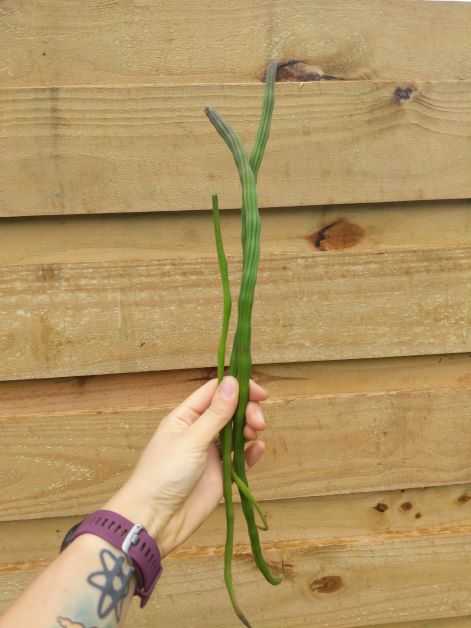
How to use Moringa
Moringa leaves:
- Use fresh leaves in salads, stir-fries, soups, and stews to add a little horseradish flavor
- Use in smoothies for their high vitamin, protein, and antioxidant content
- Dry and pulverize your moringa leaves to make a powder for supplements
- Dry whole leaves to make moringa tea
Moringa seeds:
- Toast the de-shelled seeds and eat them like popcorn. Be sure to enjoy this one in moderation as too many moringa seeds can have a laxative effect
Moringa drumsticks:
- Picked young and green, moringa drumsticks are the main ingredient in some Indian curries
What Are Some Other Hot Weather Greens?
You need to be selective when growing leafy greens during the summer. Most traditional lettuces and spinach get bitter and bolt when the weather is too hot.
The best way to guarantee summer green success is to grow tropical plants. To learn more about other greens that grow in hot weather, check out my article 18 Best Greens to Grow in Florida During Summer.
Disclaimer: Offbeet-gardener is reader-supported. At no extra cost to you, I may get commissions for purchases made through links in this post.

